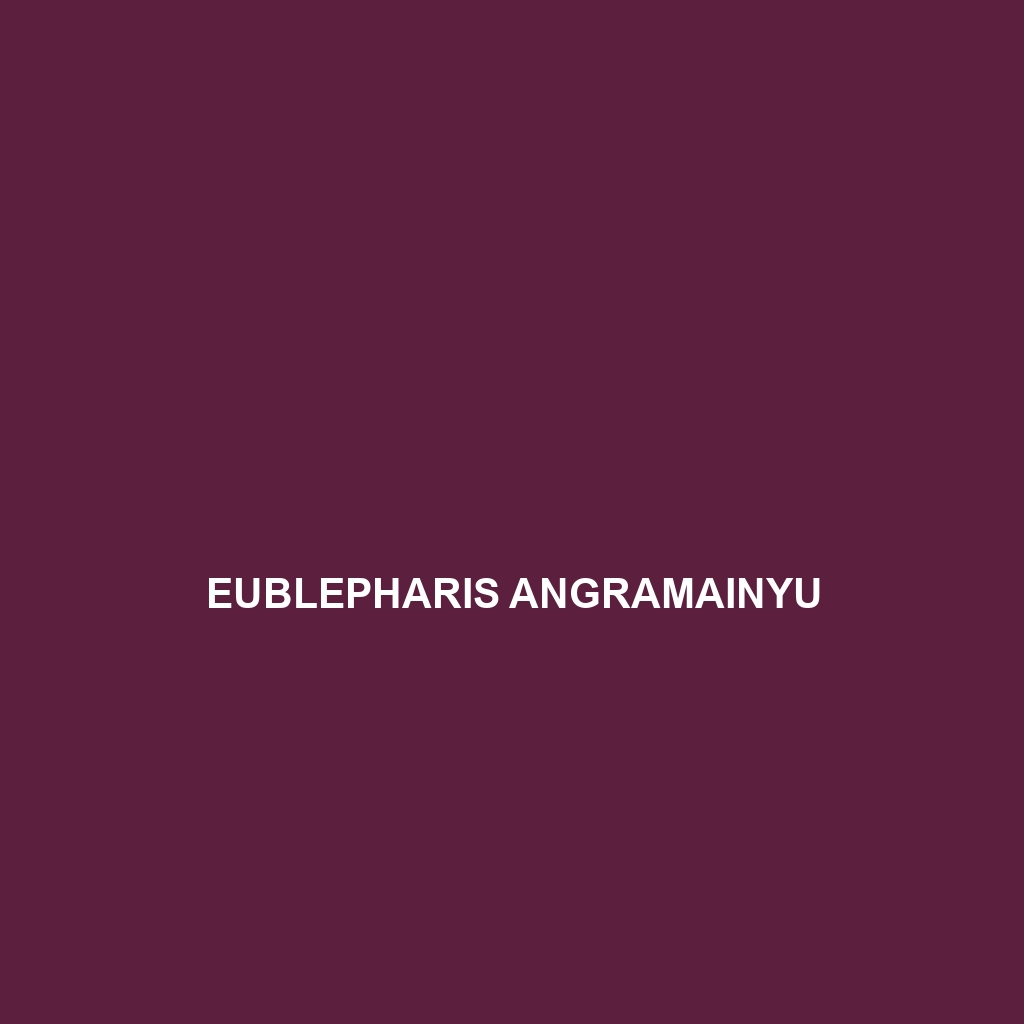Common Name
Eublepharis angramainyu
Scientific Name
Eublepharis angramainyu
Habitat
Eublepharis angramainyu, commonly known as the Indian leopard gecko, primarily inhabits arid and semi-arid regions of South Asia, which includes countries like India, Pakistan, and parts of Afghanistan. This species thrives in habitats characterized by rocky outcrops, dry scrublands, and grasslands. The climate in these areas is typically hot and dry, with occasional monsoonal rains bringing brief periods of humidity. Preferring slightly elevated terrains, Eublepharis angramainyu can often be found in rocky crevices and burrows, which provide shelter from predators and extreme temperatures. Understanding the specific environmental conditions of their habitat is crucial for conservationists and researchers working to protect these reptiles.
Physical Characteristics
Eublepharis angramainyu reaches an average length of 7 to 9 inches (18 to 23 cm), making it a relatively small species in comparison to its relatives. The body is elongated and somewhat flattened, which aids in maneuverability within its rocky habitat. A notable feature is the skin’s texture, which ranges from smooth to slightly bumpy with granular scales. The coloration varies considerably, displaying a spectrum from earthy browns and yellows to vibrant oranges and whites, allowing camouflage against the rocky substrate. Dark bands and spots adorn their bodies, helping them blend in with both their environment and creating a striking appearance. These adaptations not only serve a purpose in their everyday survival but also make Eublepharis angramainyu a fascinating subject for reptile enthusiasts.
Behavior
The behavioral patterns of Eublepharis angramainyu are particularly intriguing. Primarily nocturnal, they exhibit a range of behaviors that make them exceptional hunters. During the night, they venture out in search of food, using their keen eyesight to navigate their surroundings in low light. Socially, these geckos are relatively solitary but may engage in social interactions, especially during the mating season. Mating rituals often involve elaborate displays whereby males perform visual signals to attract females. Other notable behaviors include their unique defense mechanisms; when threatened, they can drop their tails as a distraction, allowing them to escape from potential predators. This fascinating combination of nocturnal hunting and social ritual makes them an essential subject for the study of reptilian behavior.
Diet
Eublepharis angramainyu is an insectivore, primarily consuming a diet of insects such as crickets, roaches, and mealworms. They may also take smaller vertebrates or worms when available. These geckos utilize their swift movements and acute vision to locate prey during the cover of night. Their feeding patterns exhibit a high degree of opportunism, enabling them to adapt to seasonal food variations, which is vital for their survival in fluctuating climates. The preference for live prey not only satisfies their dietary needs but also promotes healthy hunting instincts essential for their well-being in captivity and the wild.
Reproduction
The reproductive cycle of Eublepharis angramainyu typically occurs during the warmer months when environmental conditions favor mating and offspring survival. Mating usually takes place in the spring, with females laying clutches of 2 to 8 eggs after fertilization. The gestation period extends for approximately 30 to 60 days, depending on environmental factors such as temperature and humidity. Hatchlings emerge fully formed and resemble miniature adults. Parental care is non-existent in this species; instead, hatchlings must fend for themselves immediately after birth, highlighting their independent nature from an early age.
Conservation Status
Currently, Eublepharis angramainyu is classified as “Least Concern” by the International Union for Conservation of Nature (IUCN). However, habitat destruction, particularly due to agricultural expansion and urban development, poses significant threats to their populations. Additionally, the pet trade can negatively impact local populations if collection is not regulated. Conservation efforts focus on protecting their natural habitats and promoting awareness of this species’ ecological importance. By understanding and addressing these threats, conservationists aim to ensure the long-term survival of #Eublepharis angramainyu.
Interesting Facts
One of the most fascinating aspects of Eublepharis angramainyu is its unique adaptation to arid environments. These geckos have developed a specialized water conservation system, allowing them to survive extended periods without direct access to water. Furthermore, their ability to change skin color slightly in response to temperature and mood is a captivating feature that aids in both thermoregulation and social signaling. For reptile enthusiasts, their striking appearance coupled with these adaptations makes them an exceptional species to study and keep as pets.
Role in Ecosystem
Eublepharis angramainyu plays a vital ecological role as a predator of various insect populations, helping to maintain a balanced ecosystem within its natural habitat. By controlling the populations of their prey, these geckos contribute to the ecological health of their environments. Additionally, they serve as a food source for larger predators, including birds of prey and mammals, indicating their position within the food web. Their presence is essential not only for their survival but also for the overall health of the ecosystems they inhabit.
This detailed description includes essential information about the species Eublepharis angramainyu, structured for SEO optimization and readability. Each section is designed to enhance keyword visibility while offering valuable insights into the reptile’s characteristics, behavior, and conservation status.
